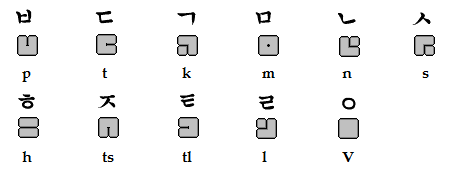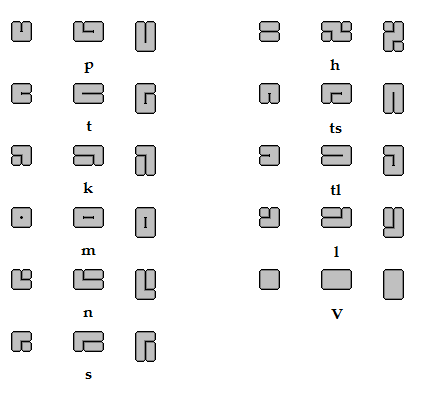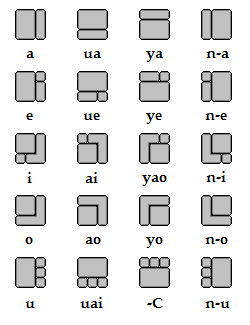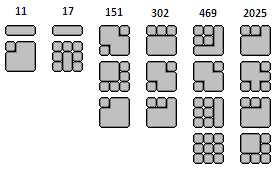Kala writing/tloko: Difference between revisions
From FrathWiki
Jump to navigationJump to search
m (→consonants) |
mNo edit summary |
||
| Line 3: | Line 3: | ||
[[File:Tloko tloko.png]] | [[File:Tloko tloko.png]] | ||
* The '''tloko''' script is logosyllabic combining about | * The '''tloko''' script is logosyllabic combining about 500 logograms (which represent whole words) and 220 syllabograms (which represent syllables). About 300 glyphs are commonly used. | ||
* '''Tloko''' is primarily meant to be an epigraphic system, but a handwritten version is in development. | * '''Tloko''' is primarily meant to be an epigraphic system, but a handwritten version is in development. | ||
* Writing direction: vertical from top to bottom and from left to right. | * Writing direction: vertical from top to bottom and from left to right. | ||
Revision as of 05:01, 5 May 2013
- The tloko script is logosyllabic combining about 500 logograms (which represent whole words) and 220 syllabograms (which represent syllables). About 300 glyphs are commonly used.
- Tloko is primarily meant to be an epigraphic system, but a handwritten version is in development.
- Writing direction: vertical from top to bottom and from left to right.
- Tloko is a mixed system like Japanese or Mayan, consisting of logograms and featural syllabic glyphs.
- Unlike Mayan glyphs which are logograms complemented by a set of syllabic glyphs, Tloko is primarily a syllabary complemented by logograms.
Featural Syllabary
- The basic consonant glyphs were directly inspired by Hangul.
consonants
- Each consonant has three forms. The form used depends on the the vowel added to form the syllable glyph.
- (V = null consonant)
vowels
- The vowels elements are shown here with the null consonant glyph.
- (-C = null vowel, or final consonant)
Logographs
- Several of the Tloko logographs are directly inspired by Hanzi, Mayan or other natural logographic scripts.
Numerals
- In large numbers, elements are combined from largest to smallest, and zeros are implied [see example "302" to the right].
-
Universal Declaration of Human Rights

The UDHR in tloko moya.
- kua tlana tsiya ma’a katsi ma kueli itlo nasa
- all human free with dignity and rights equal born
- All human beings are born free and equal in dignity and rights.
- kam tlitsi ma toya yoha ma kanku ma’a tsaku te takun ketahe
- 3PL reasoning and conscience possess and 3PL.RECP with idea of brotherhood behave.NEC
- They are endowed with reason and conscience and should act towards one another in a spirit of brotherhood.
-






